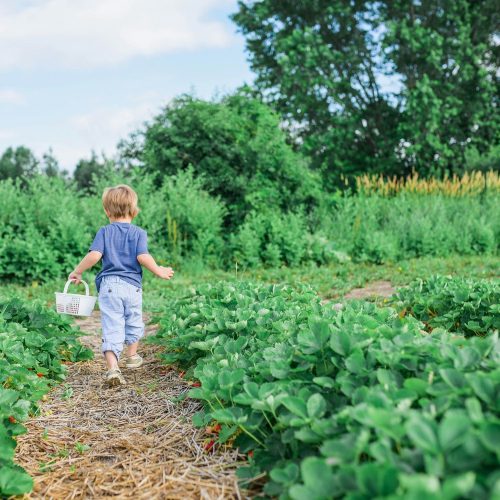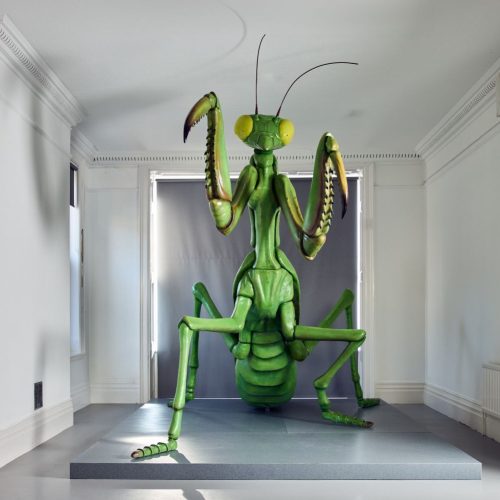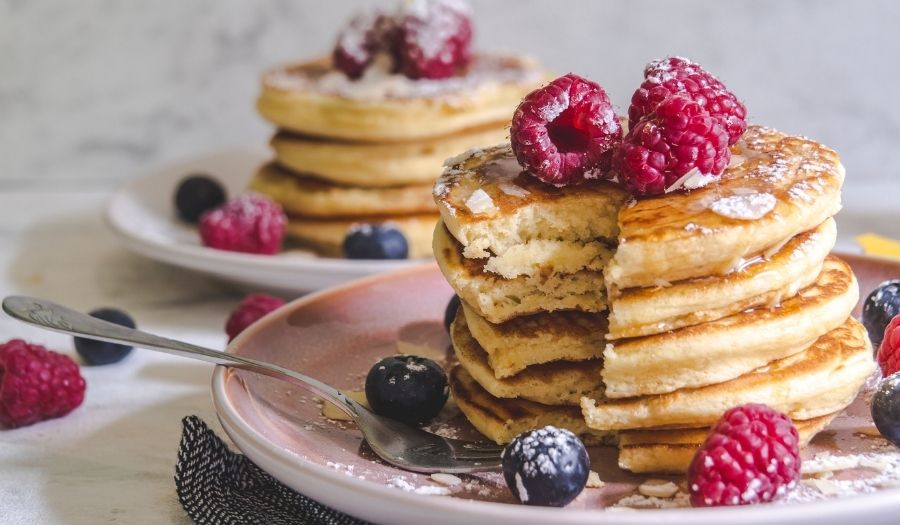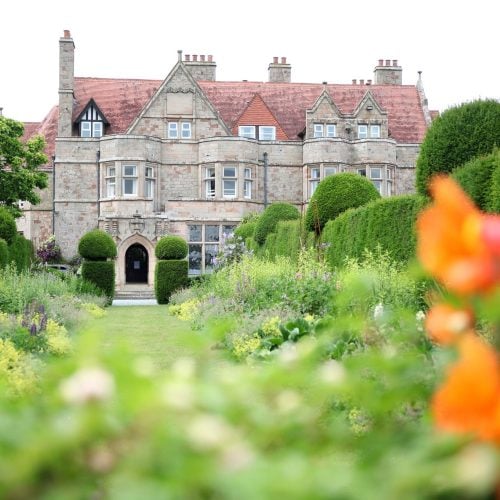7 fun things to do in the garden with kids
Make a mini golf course, plant a jam jar garden and measure a tree with your bum! Cabin fever begone with these cool gardening ideas kids will dig.
1/Plant a jam jar garden

A child-friendly and economical spin on 70s’ glass terrarium, now firmly back in vogue.
Where and when:all year round, indoors or out.
You will need:Jam jar, Kilner jar or wide mouthed bottle with lid, multipurpose compost, gravel (from the garden or drive is fine if you wash it first), activated charcoal (from pet shops), bits of moss from the lawn, and 2-4 plants, such as Fittonias, Hypoestes, Calatheas, Marantas, Pteris ferns. Hutch stock an excellent range, as well as readymade terrariums online. If you’re a fan of vintage, you could try one of Oxfordshire’s fabulous emporiums like The Old Flight House, when they’re open for browsing again.
How to do it:Pour a 1-2cm layer of gravel followed by a sprinkle of charcoal, then 3-5cm layer of compost into the base of your jar. Plant up, trying to keep them away from the glass, squirt it with a mister then pop on the lid, having first added a Lego person or small toy for added intrigue..
Keep it away from direct sunlight and really strong drafts (like radiators and breezy windows). On a desk, bedside table, coffee table or bookshelf are all great spots for a terrarium. If your terrarium starts to dry out, pop the lid off and spray in some water. If it looks too damp, and the plants look unhappy, take the lid off for a few hours to allow it dry out.
2/Measure the height a tree

No, we’re not suggesting you get kids dangling off a ladder with a tape-measure (or playing in the road for that matter). This is a clever trick anyone can do just using their body, especially toddlers who can still touch their toes without cheating.
Where and when:any time, and if you haven’t got the space or trees, you can do it in a park if you don’t mind the funny looks.
You will need:Flexible tape measure (yoga body optional)
How to do it: Start with your back to the tree then bend over and look back at the tree between your legs. Keep walking forward until you just see the top below your derriere. You are now as far away from the tree as the trunk is tall meaning you can measure the distance on the ground. Ta daaa!
3/Dig a mini golf course

Muddy stole this idea from Mr Muddy Devon’s excellent Practical Gardening Handbook– one for the would-be pro golfer in the family.
You will need: Turf, 10cm plastic or terracotta pots, trowel, kids golf clubs
Where and when:any time on the lawn but ground tends to be softer and easier to dig after rain.
How to do it:Use the trowel to dig out a hole in the lawn and set the pot into the ground so the rim is at the same level as the soil surface. That way the golf ball will go in and you won’t catch it on the mower blades. Terracotta pots look prettier and make a satisfying plunk when the ball goes in. Fore!
4/Sow the ‘Three Sisters’

Kids need a lesson in sibling co-operation? Witness three plant ‘sisters’ growing in perfect harmony. Based on an old Amero-Indian planting idea, big sis is sweetcorn and the two smaller sisters, runner beans and pumpkins. The sweetcorn provides support for the climbing beans, while the pumpkins scrambles between their stems to shade and protect the roots.
Where and when:sow seeds any time on a windowsill or greenhouse between now and April and plant out in a sunny border when frosts are over.
How to do it:1 packet each Runner Bean Scarlet Emperor, Pumpkin Cinderellaand Sweetcorn Swift, or choose from the huge selection at Oxfordshire-based Chiltern Seeds.
Method: Sow a few seeds of each in separate 10cm pots. Plant sweetcorn first, in a rectangular-shaped block, spaced 40cm apart. Plant a bean plant at the feet of the corn, to encourage them to scramble up the corn and pumpkins interspersed between.
As plants grow, watch out for slugs and water when it’s dry and hot. Pick beans when they’re small for salads (flowers are edible too). Sweetcorn is ready in late summer. Get kids to peel back the husk, and press a thumbnail into a kernel. If the juice is clear, it’s not ready, milky means you’re good to go. Harvest pumpkins either when still small and use like courgettes or leave to ripen for Halloween pumpkins.(‘Cinderella’ is so-called because it’s the same shape as the fairytale carriage.)
5/Weave a sweetpea teepee

This is Muddy’s version of the traditional sweet pea wigwam, only with a gap in the side for den-lovers. Omit the door if yours can’t be trusted not to destroy it, and get them to do the building and flower picking instead. It’s a daily job in midsummer as sweet peas are prolific and need regular harvesting to stop them going to seed.
You will need: 1 packet Sweet Pea seeds (Spencer varieties and Heritage Mix are good), 5 6ft bamboo canes or even better, hazel poles or wooden branches and sticks cut from the garden; garden twine, 9cm plastic pots or make your own from newspaper with a Paper Pot Press from Good Roots Barn.
Where and when: any time between now and March, in a sunny spot.
How to do it:Sow seeds into five separate 9cm pots, knuckle deep, 2 seeds per pot (see below) in multipurpose compost. Place in a bright spot, greenhouse or windowsill, don’t let them dry out.
Pick a flat, sunny spot in a border you don’t mind kids walking on and make your wigwam pushing sticks in at angles in a circle, leaving a ‘door’ and tying at the top with twine. If you can get your hands on willow stems, twine these round the structure to make the horizontals, failing that, use twine.
When it gets warmer and it feels like spring has sprung in late March/April, plant out the sweet peas, one at the base of each wooden pole. Their tendrils will pull the plants onto the support by themselves but they latch on quicker if you tie them in not too tightly with twine.
6/ Make ice art

Where and when: any time that it’s cold enough overnight – you’ll need to use the freezer if the weather warms up.
You will need: a shallow frost-proof container (which will need to sit flat in your freezer if it’s not cold enough overnight).
How to do it: Fill the container nearly up to the top with water and drop in garden finds like leaves and stones, or you could put some Lego or a plastic figure in there. Leave overnight to freeze and ta-daaar, ice art. If you want to make hanging ornaments, use a smaller dish and loop a length of string over the rim of the bowl submerging one end in the water. It should freeze into a hanging loop.
7/ Create your very own nature or Wildflower butterfly garden

Stratford Butterfly Farms has the perfect lockdown project for the whole family to get involved with – creating your own nature garden, with a checklist to encourage a wide variety of wildlife
What can I add to my garden: A bug house for minibeasts, a compost heap, hedgerows rather than fences, bird table or feeder, long grass and lots of flowers.
What are the best nectar flowers for butterflies: Did you know one of the best plants to have in your garden to attract British Butterflies is Buddleia. Others include bluebells, forget me not, lilac, Sweet William and primrose in spring; and in summer common valerian, catmint, cornflower, evening primrose and globe thistle.
What butterflies can you expect to see: Peacocks, Red Admirals, Cabbage Whites and Painted Ladies.
If you don’t have a garden: Try attaching a birdfeeder or a nest box outside your window and plant a window box with herbs, crocus and bluebell bulbs and wildflowers
When you have finished: Why not take part in Butterfly Conservation’s Big Butterfly Count. This is an important annual UK survey that assesses the health of our environment by simply counting the amount and type of butterflies we see.
You may also like

















